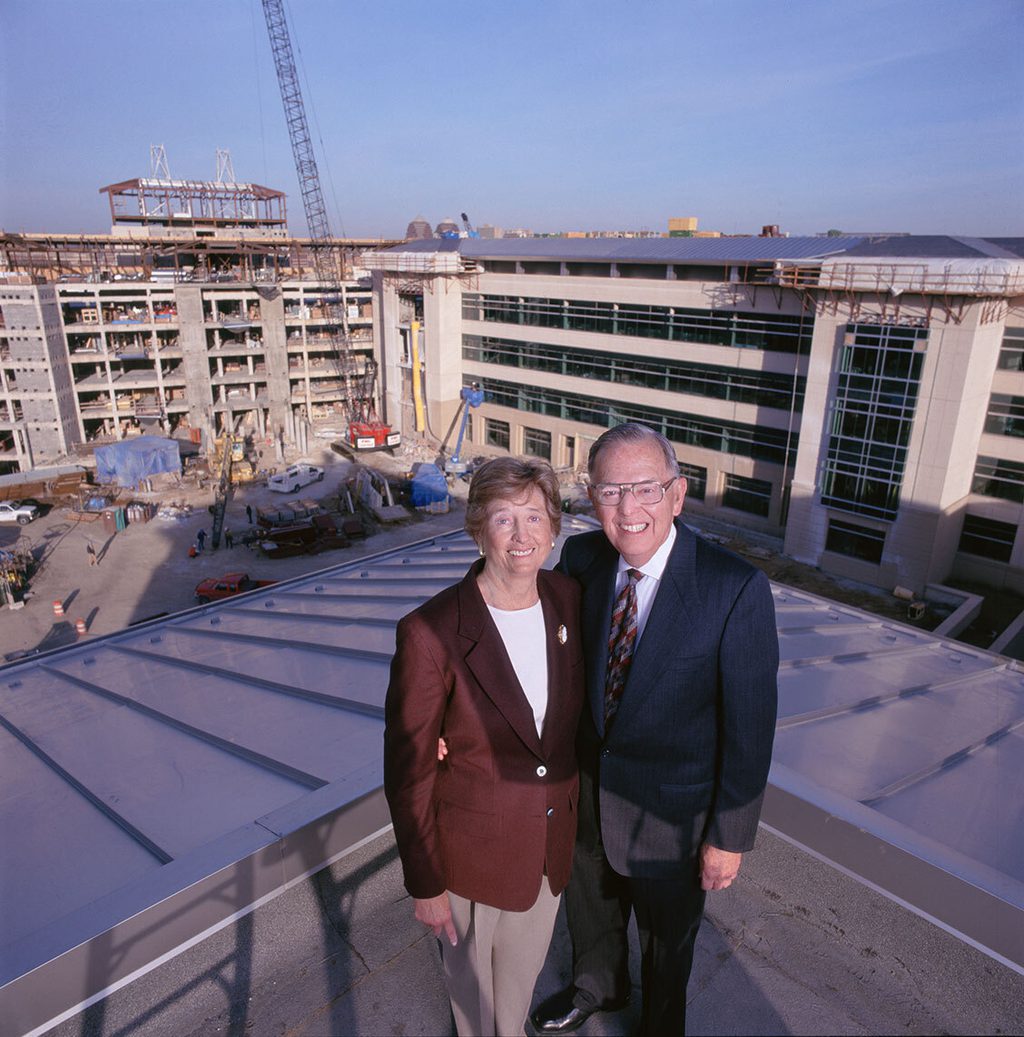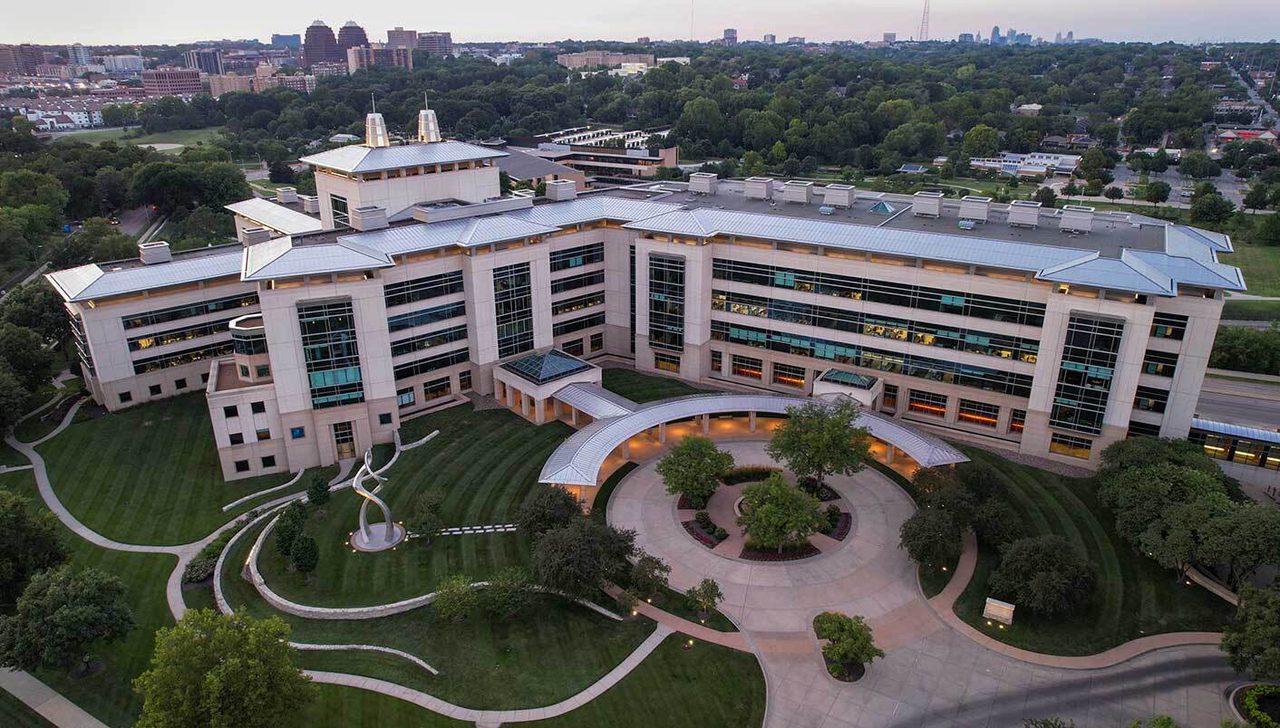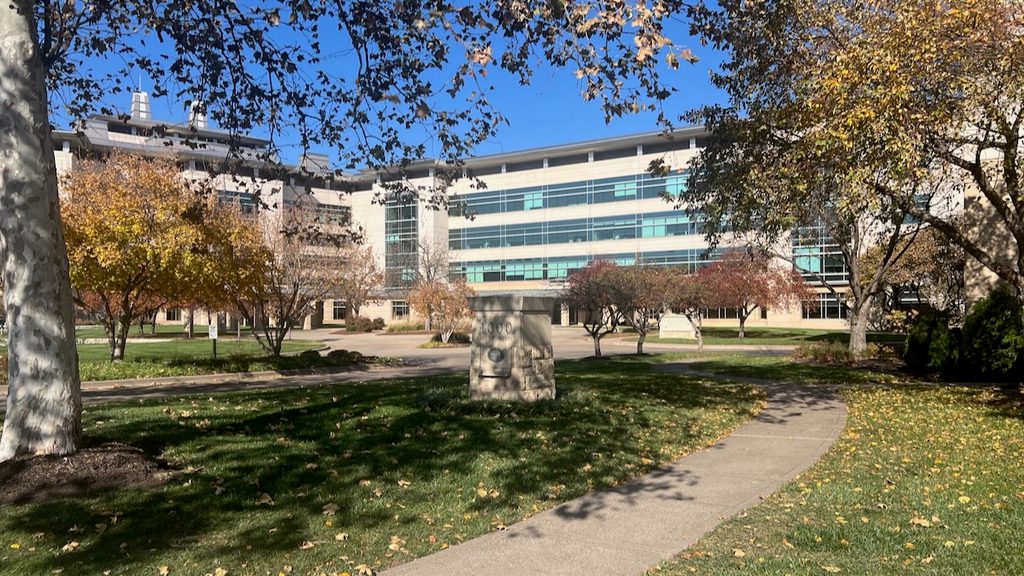#Stowers25: Celebrating 25 Years
24 November 2025
Stowers Institute celebrates 25 years of foundational research at Anniversary Symposium
25 Years of Discovery, Innovation, and Hope
Read Article
#Stowers25: Celebrating 25 Years
Institute leaders reflect on the legacy of Jim and Virginia Stowers
Jim and Virginia Stowers tour a lab on the Institute's campus.
By Andrew Johnson and Rachel Scanza, Ph.D.
What if . . .
It’s such a simple way to frame a question. But for Jim Stowers, it was a powerful engine that drove many of his business decisions when he founded the assets management firm that would later become American Century Investments (ACI) in 1958. What if our own success derives from ensuring our clients’ success? What if the key to a company’s growth is teamwork and collaboration?
And after decades of building one of the most successful investment firms in the country, he and Virginia then asked the ultimate question: What if our family’s wealth could serve a greater purpose beyond ourselves?
When Jim and Virginia Stowers first conceived of building the Stowers Institute in the 1990’s, they were driven by the same sense of possibility and hope for the future. Founding Scientific Director Robb Krumlauf, Ph.D., recalled his initial surprise when he first met Jim and wondered how a successful businessman became so committed to foundational research. Krumlauf learned that the Stowers were drawn to entrepreneurial science – creative, bold projects made possible by strong support systems that could translate discoveries into new knowledge to improve human health.

Jim and Virginia Stowers during construction of the Institute.
“He wanted to give back for the sake of the future,” said Krumlauf. “He wanted to enable discoveries that would shape the lives of his children and his grandchildren.”
Jim and Virginia’s vision to establish a world-class research institute from scratch and in the middle of the country at first faced resistance and skepticism. But Jim and Virginia remained steadfast in their resolve to build it in their hometown. They gathered a team of scientists to form the Scientific Advisory Board (SAB) and met with heads of the leading medical research facilities around the country to learn how to make their vision come to fruition.
Current SAB members Michael Levine, Ph.D., and Eric Olson, Ph.D., were among the earliest SAB members and advisors. Olson recalled feeling compelled by Jim’s energy and commitment. “When he asked me,” said Olson, “I eagerly signed up and have been deeply involved ever since.”
After purchasing the recently closed Menorah Medical Center, the Stowers began construction with an initial investment of $300 million. One of the property’s many perks was its grand view of the American Century towers only one mile west. Levine remembered his amazement when touring the site in 1999. “The magnitude of this enterprise was just awesome. That’s when I realized how serious Jim and Virginia were. The facilities showed the commitment, material and spiritual, to making this succeed.”
Jim and Virginia made an additional $600 million cash investment in 2000 for the Institute’s operation, but they also knew that creating an enduring legacy required sustainable funding. They were far ahead of their time: A decade before Warren Buffet and Bill and Melinda Gates started The Giving Pledge as a call to philanthropy, Jim and Virginia were giving $1.3 billion in ACI stock to bring the fledgling Institute’s total endowment to nearly $2 billion.

The Stowers Institute for Medical Research today.
At the time, the size of this gift was nearly unprecedented in the world of biomedical philanthropy. Besides giving most of their fortune to creating and funding the institution, the Stowers established a truly unique funding model where more than 40% of ACI’s annual dividends directly support the Institute’s research. They could imagine that their generosity in 2000 would reap benefits for human health far into the future, and they believed the investment would be worth it.
Although Jim and Virginia didn’t live to see where the Institute now stands 25 years after its official opening, it’s clear their vision was seen through.
Stowers President and Chief Scientific Officer Alejandro Sánchez Alvarado, Ph.D., explained why Institute members continue to contemplate the Stowers’ philanthropy: “Two individuals who were not scientists chose to dedicate their entire personal fortune to building an institution where science flourishes, curiosity is nurtured, and discovery becomes inevitable. The more we reflect on Jim and Virginia Stowers’ extraordinary vision, the deeper our appreciation grows for the privilege of pursuing knowledge in a place born entirely of their generosity.”
Jim passed away in 2014, and Virginia in 2021. But their vision, paired with their family’s persistence, means an entire community of scientists has spent the past 25 years building the future that the Stowers imagined.
Although they are not present to celebrate the 25th anniversary of their institute, their lasting impact is felt every day. “Every time I come here to visit,” said Olson, “I can feel the spirit of Jim and Virginia permeating this place — they are in the very DNA of this organization.”
Current Scientific Director Kausik Si, Ph.D., sees Jim and Virginia’s legacy alive in the work of Stowers scientists every day: “From the start,” he said, “the Institute focused on not being afraid to fail. Instead, it focused on ‘What if?’ ‘What if this idea is true?’ ‘What if this technique works?’ ‘What if we discover entirely new principles of biology?’ That is where we are now and where we are heading in the future.”
#Stowers25: Celebrating 25 Years
24 November 2025
25 Years of Discovery, Innovation, and Hope
Read Article
News

18 November 2025
Stowers Associate Investigator Ariel Bazzini, Ph.D., discusses a collaboration that uncovered a new mechanism guiding the earliest steps of life.
Read Article
In The News

17 November 2025
From The Beacon, when the Institute opened its Kansas City headquarters in 2000, much of the scientific world was skeptical that biomedical research could succeed in the Midwest.
Read Article
